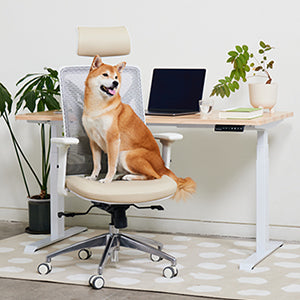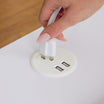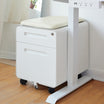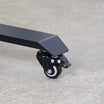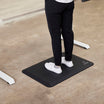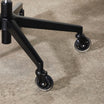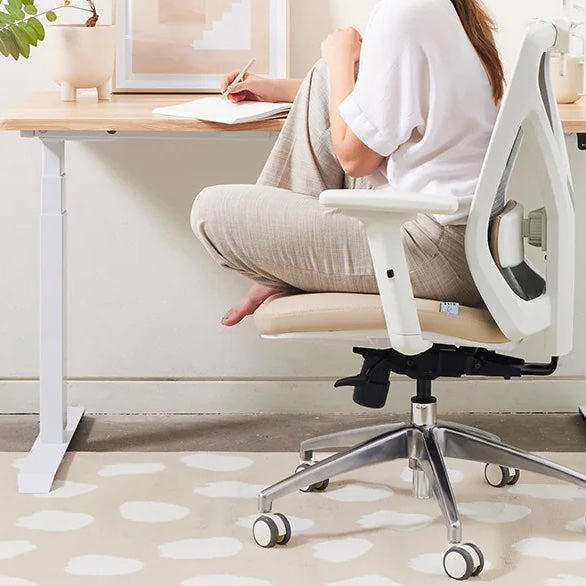Why does my spine hurt? Why does my back hurt?
These are the questions that pervade the minds of employees everywhere, burdened with uncomfortable pain in their backs and spines. Back pain is a very common problem, with 50% of adults reporting experiencing its symptoms. Back pain can range from mild aches to severe pain that prevents you from doing daily activities. Most cases of back pain will resolve within 6 weeks, but if left untreated, back pain may become chronic. Chronic back pain can lead to serious complications like nerve damage, muscle weakness, and even paralysis. To avoid these extraordinarily serious consequences of back pain, as well as to improve one’s overall quality of life, it is important to understand the best practices you can implement into your lifestyle to stop back health at the root of its problems. Read along to discover just how you can live a happier and healthier life, free of back and spine pain.
1. Sleep the Right Way

Your spine needs to be well rested after a long day at work. You need a bed that supports your back while allowing your muscles to relax. A pillow that provides proper support will help keep your spine healthy as well. If you don’t sleep in a way that supports your spine properly, it will lead to problems down the line, so it is important to consider the factors that affect your sleep.
For one, it is important to sleep on a mattress that ranges from firm to medium-firm so that it can properly support your spine and posture while you are asleep.
Changing your sleeping position to sleeping on your back is vital as well, as it is the only way that your weight is distributed evenly throughout your body, avoiding unnecessary and harmful curving of the spine. Since you should be getting 8-10 hours of sleep a night, curves can be extremely damaging for such extended periods of time, and should be avoided at all costs. Sleeping on your back is a good way to achieve this, and reduce back pain that would have ensued.
A good night’s sleep will help prepare your spine for the wear and tear of everyday activities, so making sure you are sleeping right should be a priority.
2. Exercise

The strength of your core muscles, the ones located in your lower back and abdomen, have a direct relationship to the health of your spine, since in order to take the pressure off of your spine and lower back, they need to be strong enough to provide proper support.
For most of us our core muscle groups are rarely used enough during daily activities. These muscles need regular exercise to stay strong and healthy. Your doctor, physical therapist, chiropractor, or other health professional can recommend which exercises will be best for you. Some core exercises to help reduce lower back pain are also available here.
3. Wear Proper Shoes

The support of your lower back starts at the bottom, with the shoes you wear to run or simply get to where you need to be. Your shoes should allow your feet to move freely while providing stability and support, and should also be comfortable enough to walk all day long. If you spend a lot of time standing at work or school, it is important to choose shoes that offer extra arch support. Look for shoes that are made of leather or other materials that will last longer. You may also want to invest in a pair of insoles to help keep your feet healthy and comfortable. A shoe that fits properly and is the best for your spine is one that prevents too much pronation or supination of your feet, making sure it does not roll to the outside or inside when you are standing or walking. Additionally, orthotic devices can also help to keep your foot and spine supported, and prevent injuries like plantar fasciitis.
4. Get Massages

Massage therapy is a type of bodywork that focuses on improving the circulation of blood through the body, which plays an important role in spine health. The loosening of tight muscles and connective tissues, and improved relaxation that comes from a massage help substantially with keeping your spine feeling good, and relieving the pressure that builds up over days of hard work and stress. A massage therapist will apply pressure to specific areas of the body using hands, fingers, elbows, forearms, knees, feet, and/or other tools. Massages may also involve stretching, kneading, tapping, rubbing, vibration, heat, cold, and aromatherapy. Some massages focus on relaxing tense muscles while others target specific problems like arthritis pain. There are many different types of massages, including deep tissue, sports massage, reflexology, trigger point therapy, and myofascial release, and if none of those are accessible to you – you can always get a massage chair for your home. Incorporating massages into your routine will make your spine feel better, and lead to a more peaceful life overall.
5. Limit Sitting Time

When you sit down, your body naturally leans forward. Your spine curves slightly, causing your discs to compress. Sitting for long periods of time puts pressure on your discs, making them less flexible and increasing the risk of injury. When you're sitting at a desk and staring at a computer screen, your posture becomes even worse. You may slouch and lean forward. This causes your discs to become even tighter and increases the chance of injury. This is why it is imperative to switch to a standing desk while you work, so that you can break up the time you spend sitting. Look here at the best standing desk models on the market, and start experiencing improved posture and spine health today.
6. Practice Ergonomic Sitting

Supporting the natural and healthy curves of your spine is made a lot easier when you choose a chair that is designed with your health as a priority. A chair that is designed with ergonomics in mind is what you will want to incorporate into your office space, since that is what will set you up to have the best chance at a healthy and happy spine, and lifestyle. Without an ergonomic chair, your hip flexors will shorten, and the position you sit in will put harmful pressure on your back and hips, leading to bad posture and a strained neck. Bad posture provokes the discs in your spine to compress, leading to premature degeneration and chronic pain. To avoid this, the investment into a good chair is paramount, and worth it in the long run. Look at the best models of ergonomic chairs here, and start feeling the effects of ergonomics.

